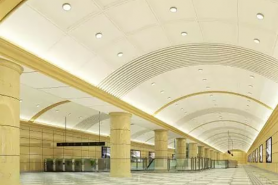The division of fire rating and fire resistance rating
First, the fire rating is divided into one, two, three, and four, with the highest level of fire resistance, the strongest fire resistance; the lowest level of fire resistance, the weakest. The fire rating of a building is determined by the fire retardant paint of the building elements that make up the building. Combustion performance and fire resistance limit. The so-called building components refer to a series of basic components such as walls, foundations, beams, columns, floors, stairs, and ceilings of buildings.
1), the combustion performance of building components refers to the reaction of the materials of building components in case of fire, which is divided into three categories: non-combustible body, non-combustible body and combustion body. In terms of non-combustible bodies such as wall columns, foundations, etc.; difficult-to-burn bodies such as hangers, ceilings and internal pipes; combustion bodies such as doors and windows, ceilings, decorative materials, etc.
2), fire resistance limit of building components: carry out fire resistance test of any building component according to the time-temperature standard curve, from when it is affected by fire, until it loses its supporting ability or The period of time until the integrity is destroyed or the fire insulation is lost is called the fire resistance rating and is expressed in hours "h". The time-temperature standard curve refers to an idealized test curve representing the development of a field fire under standard laboratory conditions according to a specific heating method. This curve was adopted by the International Organization for Standardization in order to have a unified inspection standard for the ultimate fire resistance time of building components. my country has adopted the standard fire heating curve of the international standard ISO834. The formula of the curve is T-T0=345lg(8t+1) where t is the time, in “min”; T is the temperature value that the component is subjected to when the time used is t, in “℃” meter; T0 is the initial temperature, in "°C"; the setting is 20°C during calculation. Figure 4-1 below is the temperature-time curve made according to the international standard fire heating curve formula. There are three conditions for building components to reach the fire resistance limit, namely: loss of support ability; integrity; When any one of the three conditions is met, it is determined that it has reached its fire resistance limit.
1), loss of support ability: if the specimen is subjected to flame or high temperature during the test Under the action, the bearing capacity and stiffness are reduced, the section is reduced, and the span collapse or the deformation exceeds the specified value because it cannot bear the original designed load, which means that the supporting force is lost.
2), loss of integrity: mainly refers to thin-walled separation components (such as stairs, Doors and windows, partition walls, ceilings, etc.) burst or partially collapse under the action of flame or high temperature, forming penetrating cracks or holes, and the flame passes through the components, causing the dyes on the back to burn. For example, when the floor slab is affected by flame or high temperature, the integrity is destroyed, and the flame penetrates into the upper room, indicating that the integrity of the floor slab is destroyed.
3), loss of fire insulation effect: mainly refers to the loss of thermal insulation and excessive heat conduction of the components that play the role of separation. In the test, if the average temperature measured on the backfire surface of the component exceeds 140°C, or the temperature at any point on the backfire surface exceeds the initial temperature of 180°C, it indicates that the component loses its fire insulation effect.
After a lot of test and verification work, the fire resistance limit of building components when one of the three occurs is measured by time. The building walls include load-bearing walls, ordinary clay walls and reinforced concrete solid walls. , their fire resistance limits are 2.5 ~ 10.5h respectively, which is related to the structural thickness of the wall (12cm ~ 37cm).
II. Fire-resistant design of buildings
The fire-resistant design of the building aims to prevent the building from collapsing and spreading in the event of fire, to ensure the safety of people's evacuation, and to minimize the loss of property. Buildings with different functions, different degrees of importance, and buildings with different layers have different fire hazards, so they should be treated differently in design. In my country's "Code for Fire Protection of Architectural Design", the fire resistance rating of buildings is divided into four levels. From Table 4-2, the relationship between the combustion performance and fire resistance rating of building components is shown. Buildings with high fire resistance levels, such as first- and second-level buildings, are less likely to be burnt out and collapsed in the event of a fire. When a low building is on fire, it is easy to cause partial or overall collapse, and the fire loss is large. The fire resistance design of buildings in my country adopts the fire resistance grade design method to determine the relationship between temperature and time and the fire resistance time of specific components.
Third, fire-resistant design of multi-storey buildings
Multistory building fire resistance design grades are selected based on factors such as building importance, fire hazard, and fire loads, the fire resistance rating of the building has a corresponding relationship with the combustion performance of the components. The main components of buildings with first-class fire resistance are all non-combustible bodies. Except for the suspended ceiling, the main components of buildings are non-combustible; The rest of the buildings are non-combustible; except for the fire wall, which is non-combustible, the rest of the components are incombustible or combustible.







